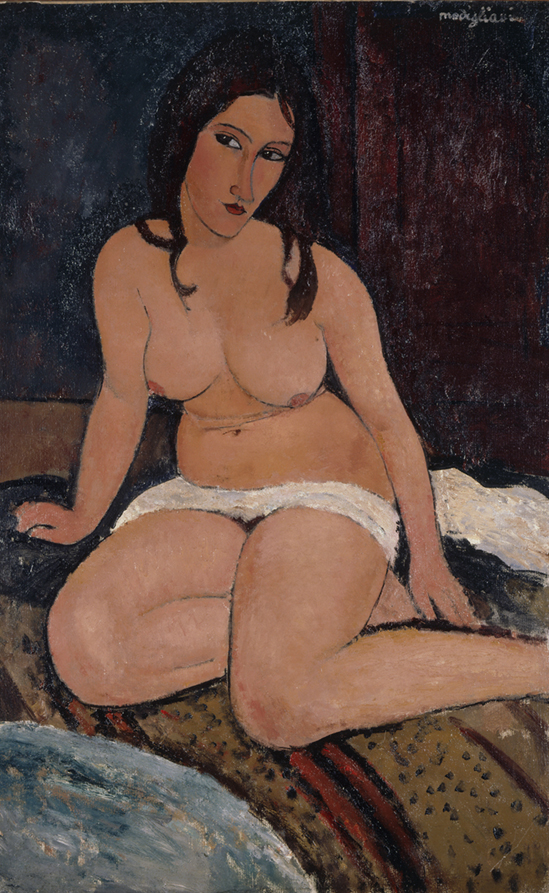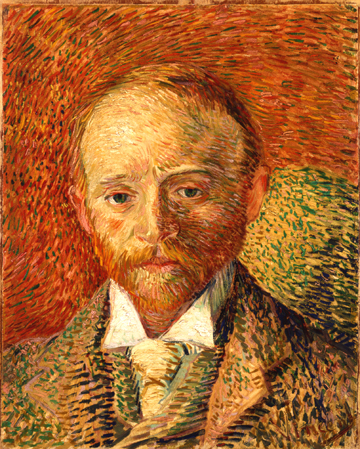
(845) 246-6944
· info@ArtTimesJournal.com
Artist as Revolutionary:
A Preview of 2006 in Great Britain
By
Ina Cole
ART TIMES Jan/Feb
2006
The idea of the artist as isolated rebel, out of sync
with a philistine society is a popular myth, perpetuated through time
and reaching a peak in the late nineteenth and early twentieth-century;
a period that witnessed the development of some of the most radical
ideas in the history of art. The year 2006 presents a number of exhibitions
in Britain focusing on artists who, by means of their chosen intellectual
yet often solitary path, declared war against accepted modes of representation.
Since the Renaissance, painting had used a geometrical system for depicting
the illusion of reality, a concept which became actively challenged
as the artists’ mission became a voyage of discovery and explanation
that profoundly questioned the way in which man viewed the world around
him.
The theme of artist as discoverer is best captured in
Rebels and Martyrs: The Artist in the Nineteenth Century at the
National Gallery, London (28 June-28 August ‘06), which brings together
paintings by many of the nineteenth-century’s most eminent artists:
Caspar David Friedrich, Eugène Delacroix, Gustave Courbet, Édouard Manet
and Edgar Degas. The exhibition traces the archetype of the artist from
its origins in Romanticism, to its climax in the works of Van Gogh,
Paul Gauguin, and their Symbolist and Expressionist heirs, including
Edvard Munch, Ferdinand Hodler and Egon Schiele. Western artists at
this time wanted to gain access to the source of creativity itself and
Rebels and Martyrs explores the different personas they developed, from the idealised bohemian
and dandy, to the priest, monk and martyr.
If there is one artist whose tortured existence holds
particular fascination, it has to be Van Gogh, one of the greatest nineteenth-century
Dutch painters, whose work is epitomised by dynamic brushwork and vibrant,
almost hallucinatory colours, often mirroring his own psychological
state. Although selling only one work during his poverty stricken life,
he has achieved a cult-like status as modern art’s tumultuous bohemian.
Van Gogh and Britain: Pioneer Collectors at Compton Verney, Warwickshire
(31 March-18 June ‘06), is the first exhibition on British collectors
of the artist’s work, consisting of acquisitions purchased in the period
before 1939. By focusing on this early enthusiasm for the artist, the
exhibition reveals important new research on British interest in Van
Gogh, whose unswerving dedication to his ideals and vast output in only
ten years, continues to inspire a wealth of material on his life and
work.
Kandinsky at Tate Modern, London (9 June-24 September
‘06), focuses on the work of this great Russian artist, who although
now considered as the pioneer of abstract painting, had often provoked
controversy amongst the patriarchs of the art establishment. As an accomplished
musician, Wassily Kandinsky’s approach to colour was highly theoretical,
believing that on seeing colour he would actually hear music. In his
works a cacophony of elements explode in the picture space in a manner
previously not attempted, and his search for new forms pivoted him to
the extremes of geometric abstraction. The exhibition charts Kandinsky’s
path towards abstraction in the period from 1902 to 1922, a time when
he became associated with Die Brücke and Blaue Reiter, before joining
the Bauhaus in 1922. This was an extraordinarily fertile period and
the exhibition focuses on the consequences of his innovative discoveries
during the turbulent years of the First World War and the Russian Revolution.
The first major exhibition of the work of Modigliani
held in Britain for over forty years, takes place at The Royal Academy,
London (8 July-15 October ‘06). Italian born Amedeo Modigliani lived
a short life of excess, arriving in Paris in 1906, which was then fast
becoming the capital of bohemian culture. Although his life style was
notorious, in his work Modigliani was highly disciplined, restricting
himself almost exclusively to the depiction of the human form. Without
associating himself with any particular group, he developed an immediately
recognisable style of working, characterised by primal, elongated heads
balanced on disproportionately long necks. The legend of Modigliani’s
life has been cultivated through time, which unfortunately ignores the
intense concentration of works produced in his last years. There is
a curious elegance in his uniformly stretched models and the exhibition
Modigliani and his Models, offers an opportunity to re-evaluate
the artist’s critical reputation, exploring his unique position in the
early history of modernism.
One of the most significant events of 2006 is the 100th
anniversary of the death of Paul Cézanne, who is unanimously regarded
as one of the greatest forerunners of modern art. Although actively
involved in the revolutionary creative ferment directed against the
French bourgeoisie and academism, and working in increasing isolation,
he never the less developed a significant reputation in his own life
time. Cézanne achieved a new synthesis of reality and abstraction, which
paved the way for some of the most pioneering developments of the twentieth
century, first fully expressed in Cubism. Cézanne in Britain
at the National Gallery, London (4 October -7 January 2007), traces
the development of his painting from the 1860s to his death in 1906,
focusing on how Cézanne’s work first arrived in Britain and the role
played by the art establishment in securing the artist’s reputation.
What all these artists have in common was their unwavering
belief in a new order; a radical re-organisation of pictorial systems
to not only challenge notions of academic acceptability, but to bring
to the surface deep physiological states. In many cases the pioneering
aspects of the work at the time of its production was only understood
by the enlightened minority, often taking decades for the majority to
appreciate its full significance. This is unfortunate, as the artists’
aim is often universal, expressing an idealised collective rather than
an individual sentiment. In this context it can certainly be argued
that a work of art does not just signify the relationship between man
and the world he inhabits, it can also be the projection of a world
that does not yet exist, which may explain why the individual concerned
often endures such an intense struggle against conformity in order to
transcend tradition in the name of progress.

